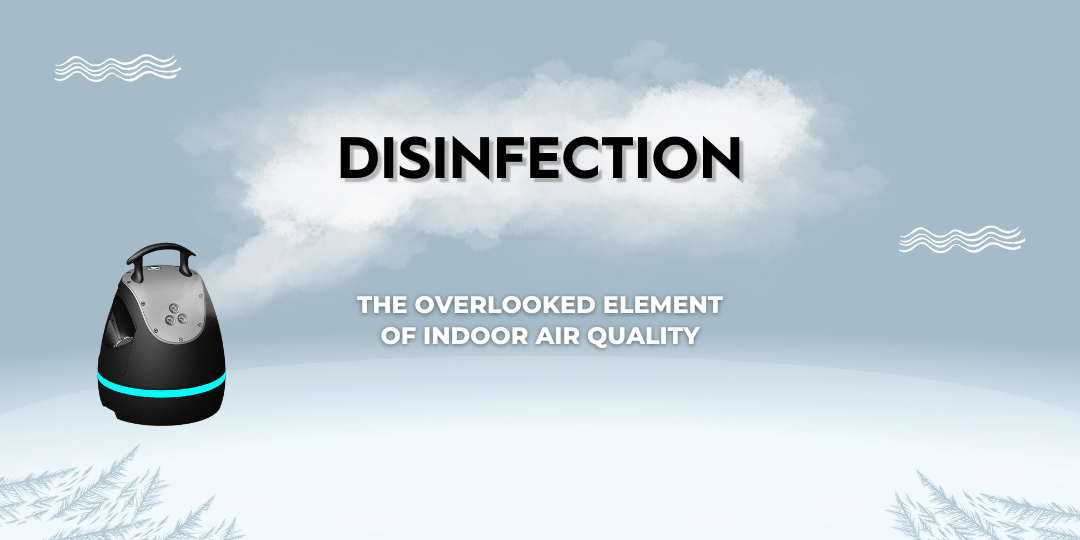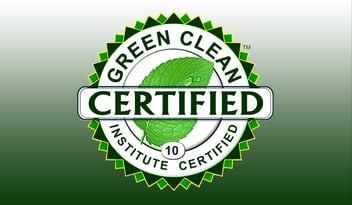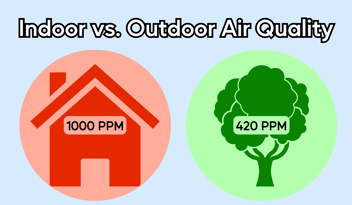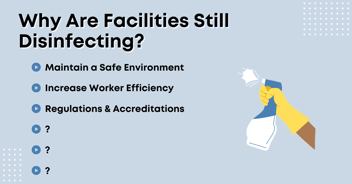
The Overlooked Element of IAQ
Indoor air quality has become a bit of a hot topic in the past few years. With people spending more time indoors, air pollution causing adverse health effects, and airborne diseases causing worldwide disruptions, it makes sense for people to turn their focus to indoor air. Air filtration and ventilation are common methods of improving air quality, but one element is often overlooked: disinfection.
Why IAQ Matters Right Now
The importance of indoor air quality grows as people spend more time inside of buildings. According to the EPA, the average American stays indoors about 90 percent of the time. Unfortunately, the air inside our homes, workplaces, and businesses can often be more polluted than the air outside due to a variety of factors such as poor ventilation, the presence of mold, and the use of cleaning products. While overall air pollution has improved in the past few decades thanks to the Clean Air Act, some pollutants can be two to five times more concentrated indoors compared to outdoors.
Another risk of being indoors is the spread of illnesses; during the winter of 2022-2023, the flu, RSV, and COVID-19 created a “triple-demic” that made group gatherings even more dangerous. These diseases (and more) are transmitted through the air, so improving ventilation, increasing air filtration, or disinfecting the air can directly reduce the amount of pathogens, thereby lowering the risk of inhaling contaminated air particles. Cleaner and healthier indoor air decreases the spread of airborne diseases, protects against outdoor air pollutants such as smog and wildfire smoke, and decreases the number of environmental triggers for conditions like asthma and allergies, according to the White House. Some experts even argue that a revolution in indoor air quality could put an end to the COVID-19 pandemic (The Tyee).
Indoor air quality is an important aspect of maintaining a healthy living and working environment. Poor ventilation, mold, and even some cleaning products can negatively contribute to air quality. However, when properly used, disinfectants can be beneficial to indoor air.
How Disinfecting Affects IAQ
Disinfectants are chemical compounds that are used to kill or inactivate microorganisms such as bacteria and viruses. When used correctly, disinfectants can help to reduce the spread of infectious diseases and improve overall air quality by removing harmful pathogens from the air. Decreases in the spread of illness leads to a reduction in the number of absences for students and workers alike. In addition, disinfecting can help to remove odors and improve the overall cleanliness of a space.
However, it's important to note that misuse of disinfectants or using harsh chemicals can have negative effects on indoor air quality. Certain disinfectants, particularly those that are heavily scented or contain volatile organic compounds, can cause irritation to the eyes, nose, and throat, as well as contribute to the overall levels of indoor air pollution. Fragrance-free and dye-free products are recommended because they can avoid aggravating those with allergy sensitivities (GSF USA). Additionally, overuse of disinfectants can also cause bacteria to become resistant to them over time, making it harder to control the spread of disease.
For these reasons and more, Build With Robots recommends Breezy BioCare™ RTU for disinfecting. It is a Green Clean disinfectant, meaning it is nontoxic, environmentally friendly, and safe to use around different materials. When used with our fogging technology, the disinfectant leaves no residue, is safe around papers and electronics, and still disinfects all surfaces and the air quickly and with efficacy over 99.99 percent. By using Breezy BioCare™ RTU properly, facilities can minimize negative effects and maximize the benefits of disinfecting.
Consequences of Poor IAQ
Poor indoor air quality can have many negative effects. It can affect cognition and productivity which would be an issue in any workplace. In schools, students may be absent more and get lower grades. Businesses might see more worker absences, increased illness, and reduced staff productivity. In addition, poor air quality can negatively affect the wellbeing and experience of customers in a facility (CleanLink). Clean air plays a role in people’s physical and mental health, so it should be prioritized.
Air purifiers and automated disinfection systems (such as Breezy Blue foggers) are two easy methods of improving the air quality inside of a building. They are hands-off, easy-to-use devices that reduce the number of pollutants, pathogens, and bacteria in the air. Plus, daily disinfection gets rid of harmful particles in the air and across all surfaces, greatly improving the cleanliness and safety of a facility. Air ventilation is another effective method of boosting indoor air quality, but can require a lengthy, costly process of altering the ventilation throughout a facility. If you’re looking for an easy way to improve the air quality in your workplace, filtration and disinfection are great opportunities to get you started.
In conclusion, indoor air quality has become a relevant topic for building owners and managers. Disinfecting, when used appropriately, can reduce the spread of infectious diseases and improve overall air quality by removing harmful pathogens from the air. However, low quality disinfectants can actually create pollutants, so disinfection is not often thought of for indoor air quality despite its effectiveness. A combination of proper cleaning techniques, ventilation, and the use of air purifiers can help to maintain a healthy indoor environment.




